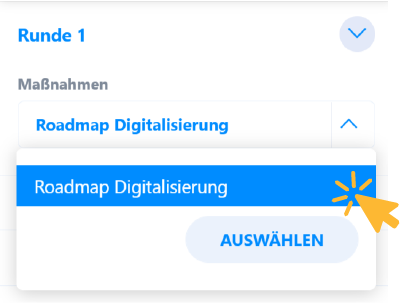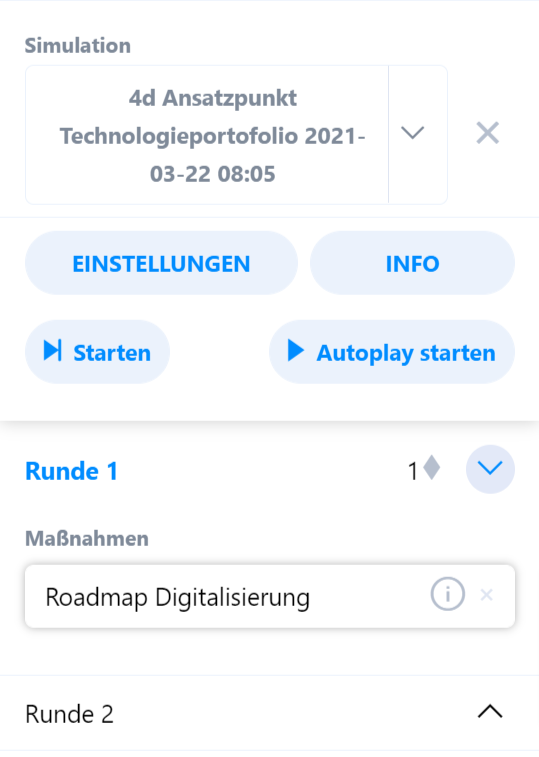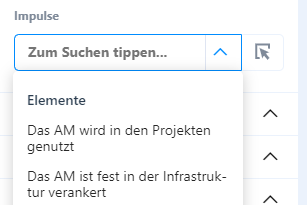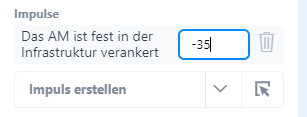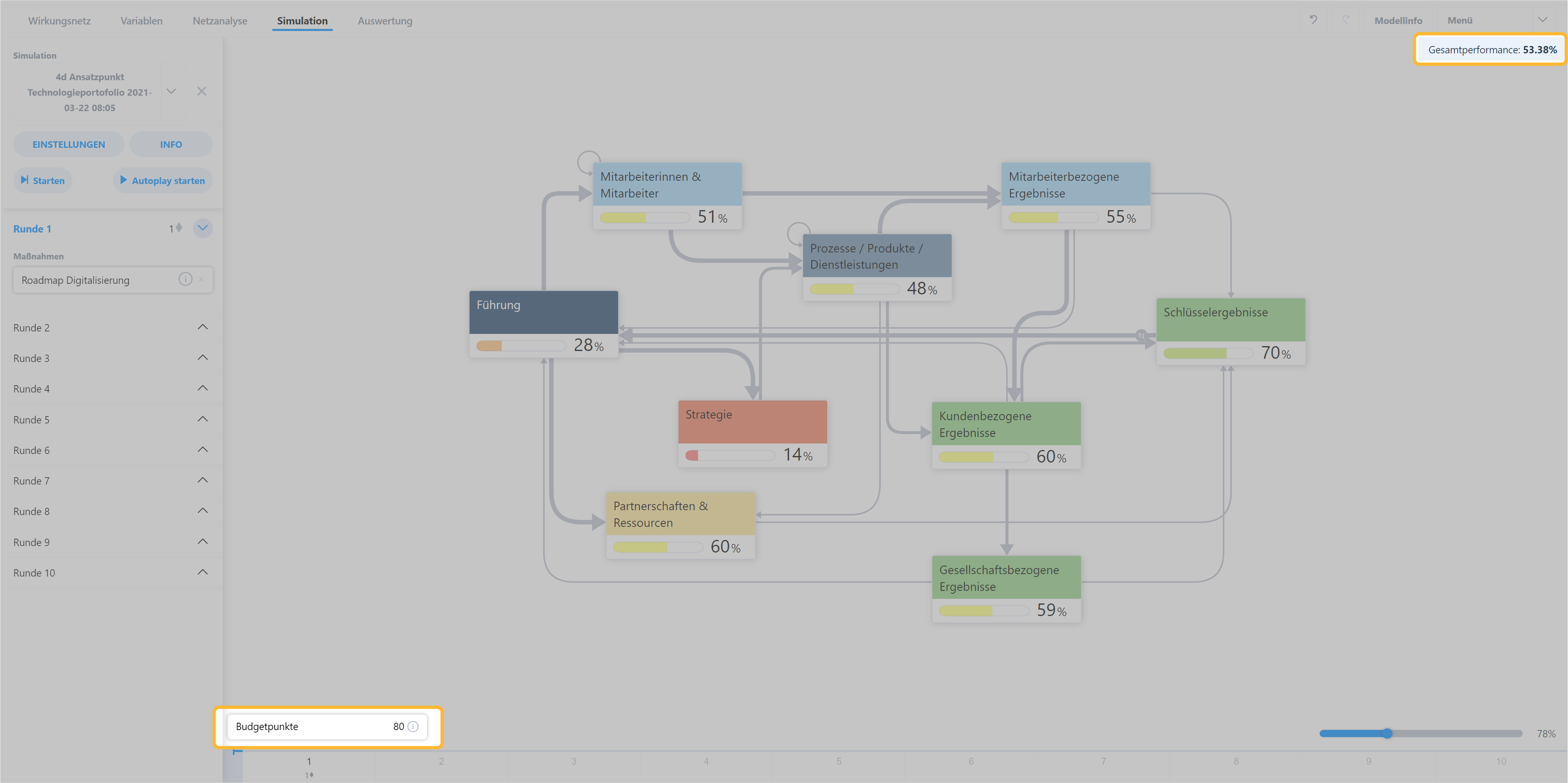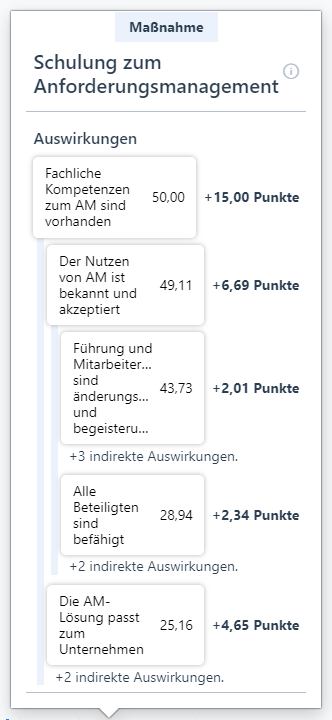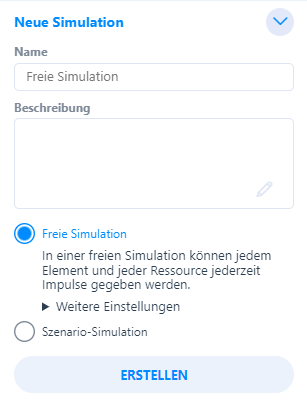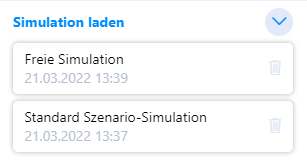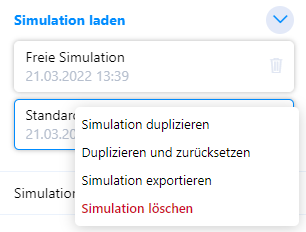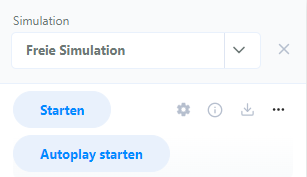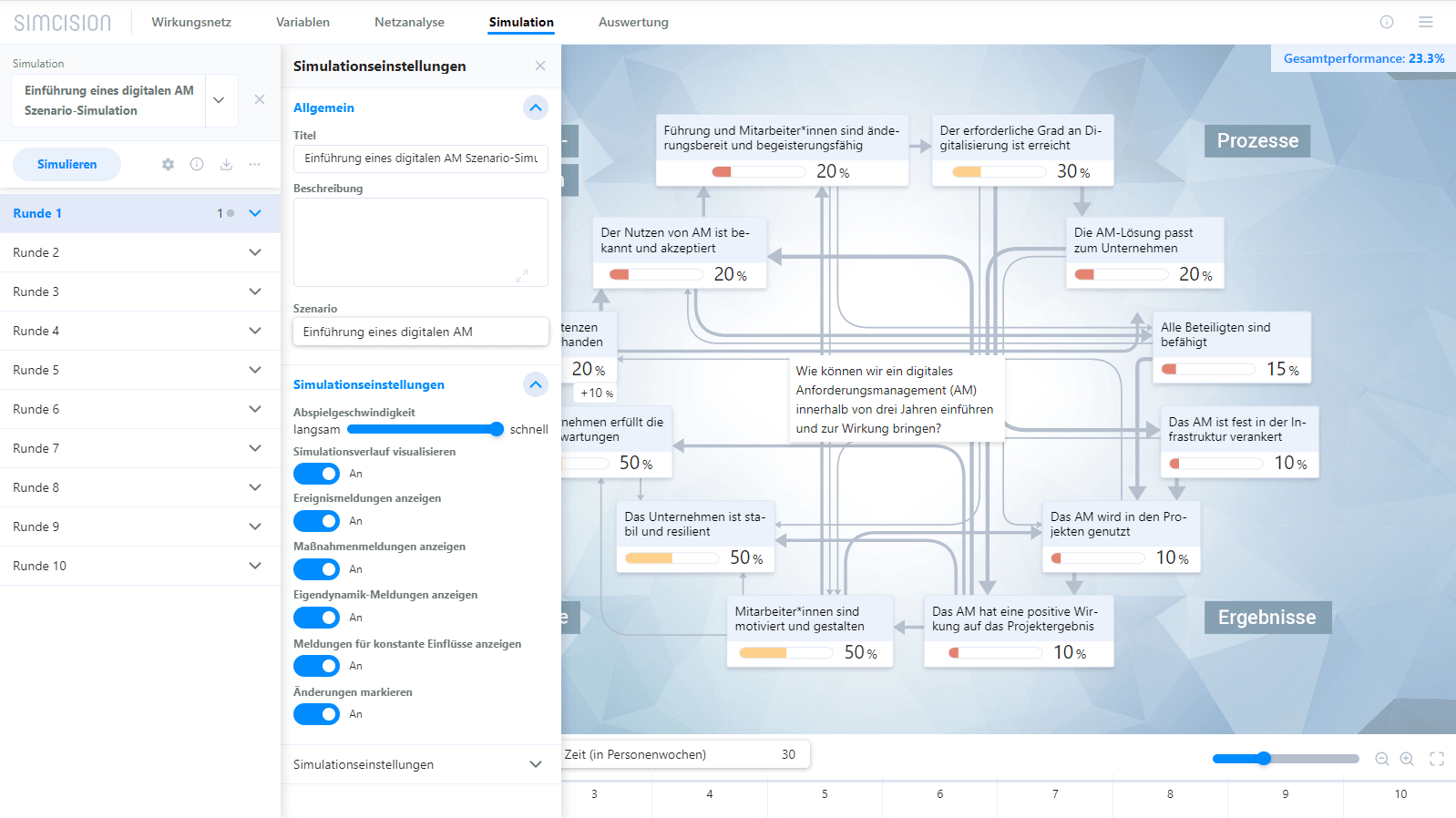Functionality
# Simulation procedure
The simulation has a fixed sequence, in each round all influences and effects are processed in the same order.
All influences that affect the elements during the simulation are first noted as “impulses” for each element. Once all the influences of the model have been processed, these impulses are offset against the current element states.
Simulation steps of each round:
- Pending impacts
If an action or event with an impact has been activated over several rounds in a previously simulated round, the impacts of this influence are distributed as impulses to the elements. - Impact Links
Impulses are now transferred to the influenced elements from all elements with outgoing impact links. The impulse transferred depends on how much the state of the source element has changed in the previous round. This impulse is weakened or strengthened by the value curve of the relationship and added to the target element. - Self-Driven Dynamics
All the elements’ own self-driven dynamics are activated and give their associated elements an impulse. - Constant influences
All resources that have constant dependencies on elements and are therefore changed in each round depending on element states are assigned this effect as an impulse. - Events
All events are checked one after the other (in the order in which they are sorted in the menu) to see whether they occur. To do this, all their triggers are checked according to their conditions. If all the conditions of a trigger are met, the event occurs with the specified probability.
Each event can only occur once per round. - PAUSE
The simulation stops here – now is the time to react to the previous effects and events and plan actions or manual impulses.
Click on “Simulate” to continue the simulation.
(If “Autoplay” is activated, this step is skipped) - Actions
All planned actions are executed one after the other (in the order in which they were sorted in the round menu) – their conditions are checked, the required resources are measured – if all their requirements are met, the action is triggered: Its costs are deducted and its effects are calculated as impulses. - Manual impulses
All manually entered pulses are added directly to the corresponding elements or resources. - Calculate impulses
All impulses on the elements or resources are now calculated collectively and the states and values are recalculated. - Check termination criteria
After calculating the new element values, all termination criteria are checked. If one is fulfilled, the simulation is terminated. - Start next round
As long as the simulation is not finished, the next round starts automatically and all steps are carried out again – up to the “PAUSE” step.

